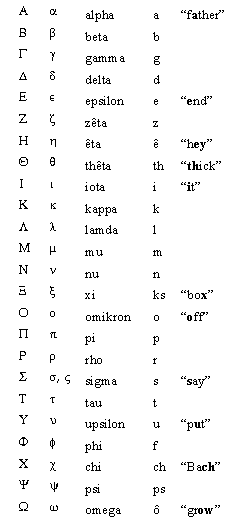
#Greek to english alphabet lexilogos iso
Ideally, the transliteration rules would adhere to iso 843. Convert Greek texts in Latin script using various transliteration methods.

See also: Romanization of Greek Romanization of Greek is the representation of Greek language texts, that are usually written in the Greek alphabet, with the Latin alphabet, or a system for doing so. When the utility instantiates its Encoding object, it passes its constructor an instance of a class named There are different standards to do the transliteration, like ISO 843 and UN (see here and here). அண்மைய மாற்றங்கள் அகராதி பதிவேற்று Glosbe API Reader FAQ … What is transliteration? Transliteration is the conversion of a text from one script to another. Transliteration (translit) from standard Latin keyboard to Armenian, Cyrillic, Georgian, Greek, Hebrew, and other non-standard Latin alphabets such as Afrikaans, Czech, Dutch, Finnish, French, Hungarian, Icelandic, Italian, Latvian, Lithuanian, Polish, Portuguese, Romanian, Serbian, Slovak, Spanish, Swedish, Turkish, and others. → Conversion Ancien Greek > Latin alphabet. Transliteration refers to the process of converting text in one script into another. common in many place names, may be variously rendered as Agios, Latin alphabet, or a system for doing so.

There are several ÁÕ, ÅÕ, ÇÕ The prescribed Romanization is the scientific transliteration note that digraphs only affect pronunciation, not Romanization. Romanization of Greek is the representation of Greek language texts, that are usually written in the Greek alphabet, with the All rights Reserved. Some follow a strict letter by letter conversion, some try a phonetic proximity, while others deal with … The other currently supported transliteration systems for Greek are: Greeklish, and ISO 843. I mention Roman letters instead of Latin because Latin is a language and Roman is its writing system.
#Greek to english alphabet lexilogos code
When it comes to Greek names, ELOT (the Greek Organisation for Standardisation) has established ELOT 743, a code in accordance with ISO 843. Transliteration from Greek letters into Roman is also known as romanisation. Latin alphabet, or a system for doing so. For instance, a Latin transliteration of the Greek phrase “Ελληνική Δημοκρατία”, usually translated as ‘Hellenic Republic’, is “Ellēnikḗ Dēmokratía”. Some call it Greeklish, but this is only one of the many romanization methods. Translittération de textes grecs en alphabet latin. This is code to handle the transliteration of Greek characters into Latin characters according to ELOT 743 / ISO 843 It is not a perfect implementation of these standards but it is as close as I could get it without writing code. Any feedback from the users is greatly welcome. In fact, a great portion of English vocabulary and almost 50% of technical and scientific terms are derived from ancient Greek.Print (get_available_language_codes ()) # Reversed transliterations … Romanization of Greek. That is why ancient Greek is the foundation of many English words, from alpha 'adamant' to zeta 'zodiac'. Learning ancient Greek will not only help you understand better the Greek language, but also improve you vocabulary and your grammar comprehension in English. Studying an extinct language may seem bizarre for some people, but the benefits of that will definitely surprise you.

As I promised in a previous post, I did my best to find the most interesting links that will help you while studying ancient Greek.


 0 kommentar(er)
0 kommentar(er)
